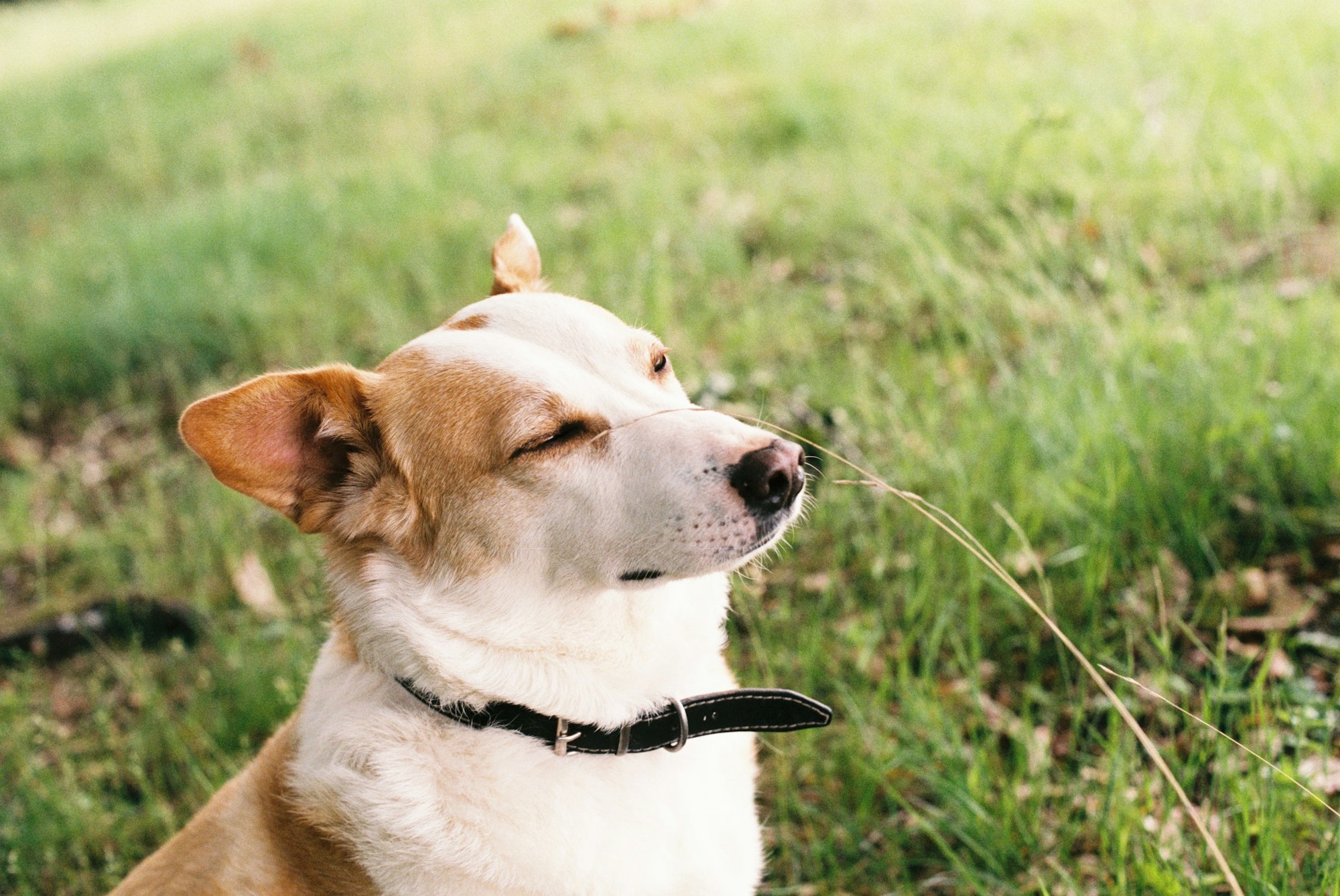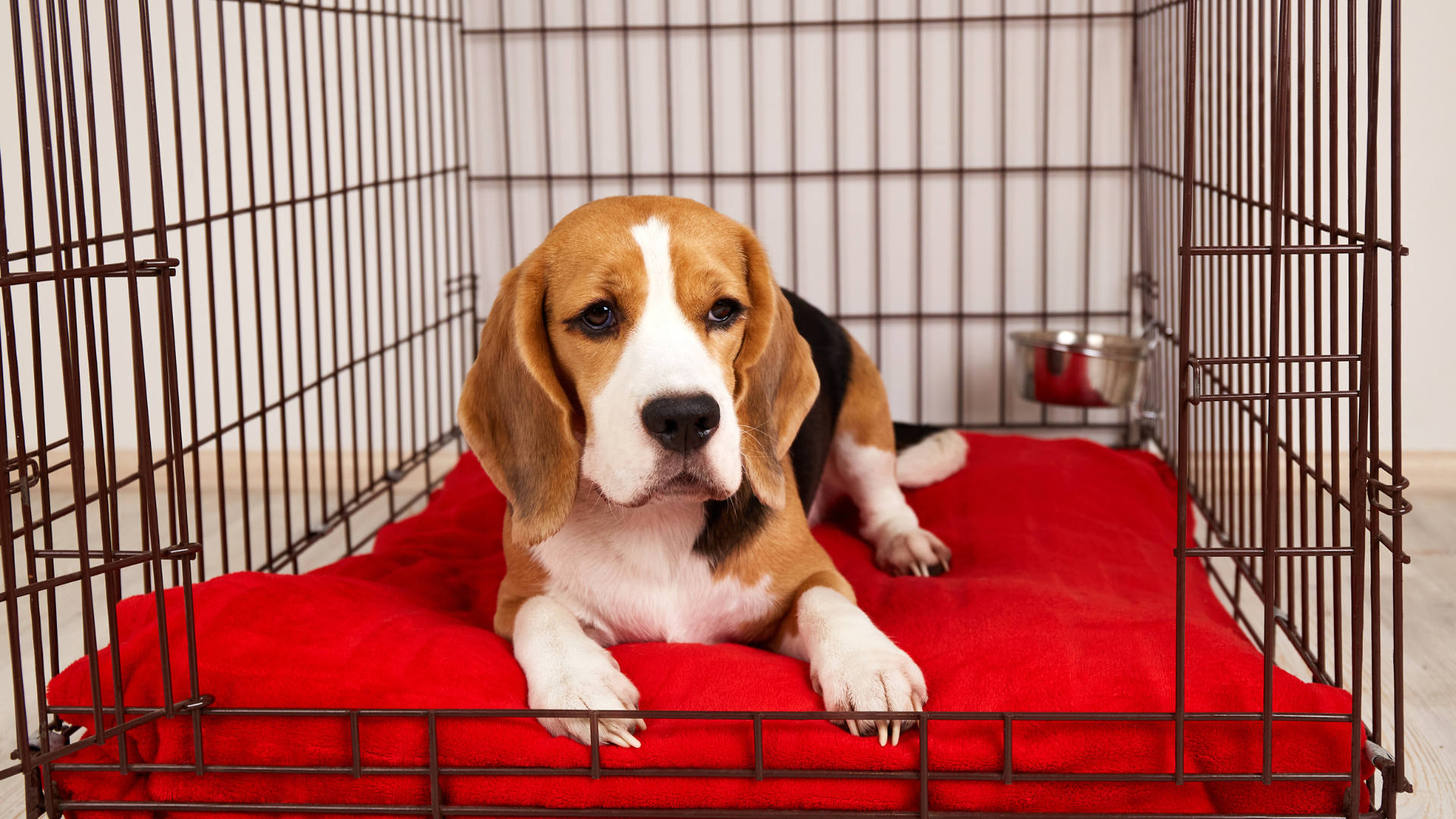Training your dog to be calm in public is essential for a harmonious and stress-free experience when you're out and about. It not only ensures the safety of your dog and those around you but also allows you to enjoy various activities together without any unnecessary anxiety or disruptions. In this article, we will explore effective methods and techniques to help you train your dog to be calm and well-behaved in public settings.
Understanding the Importance of Training Your Dog:
Training your dog is not only about teaching commands and obedience; it's about instilling good behavior and ensuring your dog's overall well-being. When your dog is calm and well-behaved in public, it becomes easier to handle different situations, reducing the risk of accidents or conflicts. Moreover, a well-trained dog is more confident and can enjoy social interactions without feeling overwhelmed or anxious.
Start with Basic Obedience Training
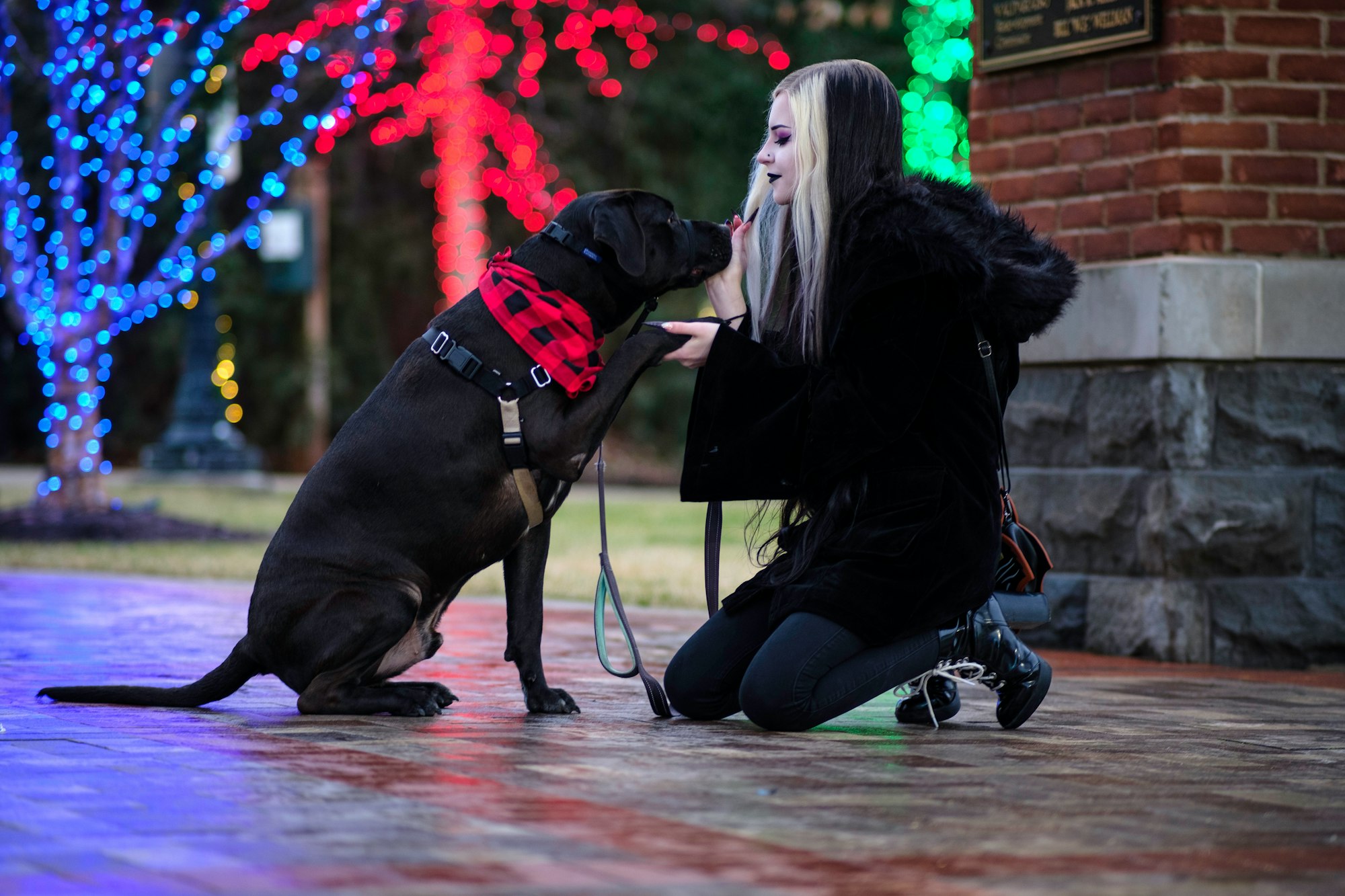
Before venturing into public spaces, ensure that your dog has a solid foundation in basic obedience training. This will provide them with the necessary skills and discipline to navigate different situations calmly. Focus on the following key commands:
1. Sit and Stay Commands: Teach your dog to sit and stay on command. Start with short durations and gradually increase the time as they become more comfortable. These commands are essential for keeping your dog composed in public places.
2. Focus and Leave It Commands: The focus command helps your dog maintain their attention on you amidst distractions. The leave-it command is valuable for redirecting their attention away from potentially harmful or tempting objects.
c. Loose Leash Walking: Practice loose leash walking to ensure that your dog walks calmly and politely beside you. This will prevent them from pulling or lunging towards stimuli in public, promoting a sense of calmness.
Socializing Your Dog:
Socialization plays a vital role in training your dog to be calm in public. Gradually expose your dog to different environments, such as parks, cafes, or busy streets, to help them become familiar with various sights, sounds, and smells. Introduce your dog to new people and animals in controlled settings, ensuring positive interactions. This exposure will build your dog's confidence and reduce the likelihood of anxiety or aggressive behavior in public.
Gradual Exposure to Public Environments

Once your dog has mastered basic obedience commands, it's time to expose them to various public environments. Follow these steps for successful socialization:
a. Controlled Socialization: Gradually introduce your dog to different public settings, starting with quieter and less crowded areas. Allow them to observe and experience new sights, sounds, and smells while ensuring they feel safe and secure.
b. Positive Reinforcement: Reward your dog with treats, praise, and affection whenever they exhibit calm behavior in public. Positive reinforcement helps them associate public environments with positive experiences and encourages them to remain calm.
c. Desensitization Techniques: If your dog shows signs of anxiety or nervousness in public, employ desensitization techniques. Gradually expose them to the stimuli that trigger their anxiety, using positive reinforcement to create positive associations and gradually reduce their sensitivity.
Teaching Relaxation Techniques:
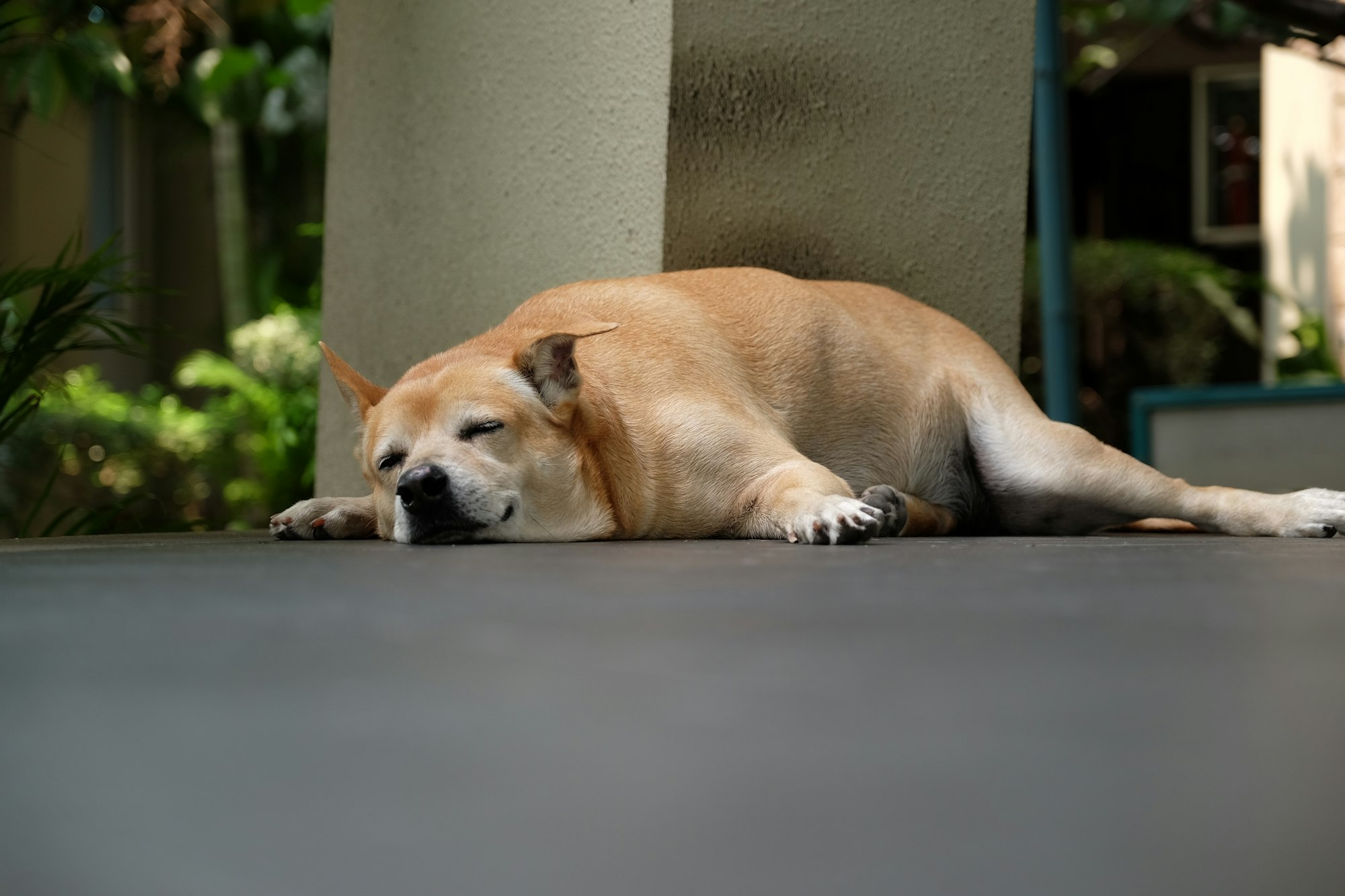
In addition to obedience training, teaching your dog specific relaxation techniques can help them remain calm in public. Here's how you can do it:
a. Create a Calm Environment: Start by creating a calm and soothing environment where your dog can unwind. Find a quiet area in your home, away from distractions and noise. Ensure your dog has a comfortable bed or designated spot where they can relax. Dim the lights, play soft music, or use aromatherapy with calming scents like lavender to enhance the ambiance.
b. Progressive Muscle Relaxation: Progressive muscle relaxation is a technique that helps dogs release tension and promote relaxation throughout their bodies. Gently stroke your dog from head to tail, applying gentle pressure to different muscle groups. Start with their head, then move to their neck, shoulders, back, legs, and dog paws. Repeat this process while focusing on each area and encouraging your dog to relax their muscles.

c. Deep Breathing Exercises: Deep breathing exercises can help your dog calm their mind and relax their body. Sit or lie down beside your dog and take slow, deep breaths. Encourage your dog to match their breath with yours by breathing in and out together. You can place your hand on their chest or belly to feel their breath and guide them to take slow, deep breaths. This exercise promotes relaxation and can be particularly useful during stressful situations.
d. Massage and Tactile Stimulation: Massaging your dog can be a powerful tool for relaxation. Use gentle, circular motions to massage their neck, shoulders, back, and limbs. Pay attention to areas where your dog holds tension, such as their shoulders or lower back. Be mindful of their body language and adjust the pressure accordingly. Massage not only relaxes your dog's muscles but also enhances the bond between you and your furry friend.
e. Calming Music and White Noise: Playing calming music or white noise can create a serene atmosphere for your dog. Certain classical music, nature sounds, or specially designed relaxation tracks for dogs can have a soothing effect. Experiment with different types of music to find what resonates best with your dog. You can also use white noise machines or apps that emit gentle sounds like rainfall or ocean waves to promote relaxation.
f. Training "Settle" or "Relax" Command: Teaching your dog a specific command, such as "settle" or "relax," can signal them to calm down and enter a relaxed state. Start by using this command during quiet moments when your dog is already calm. As they begin to associate the command with relaxation, gradually introduce it during slightly more stimulating situations. Reward your dog with treats or praise when they respond to the command by relaxing their body and settling down.
By teaching relaxation techniques, you provide your dog with valuable tools to self-soothe and remain calm in public. Incorporate these techniques into your training routine, and with patience and practice, your dog will learn to relax and maintain composure even in stimulating environments.
Managing Stress and Anxiety:

It's essential to address any underlying stress or anxiety that your dog may experience in public settings. Here are some strategies to help manage stress and anxiety:
a. Create a Safe Space: Designate a safe space at home where your dog can retreat and feel secure. Provide comfortable bedding, puzzle toys, and calming music to create a soothing environment.
b. Gradual Exposure: Gradually expose your dog to public environments, starting with low-stress situations and gradually increasing the level of exposure. This approach allows your dog to build confidence and adapt at their own pace.
c. Counter-Conditioning: Use positive reinforcement techniques to associate public spaces with positive experiences. Reward your dog with treats and praise when they exhibit calm behaviors or responds well to stressful stimuli.
d. Calming Supplements: Consult your veterinarian about the possibility of using natural calming supplements or medications to help reduce your dog's stress and anxiety in public settings. These supplements can provide additional support during the training process.
e. Seek Professional Help: If your dog's stress and anxiety persist or worsen despite your efforts, consider consulting a professional dog trainer or a veterinary behaviorist. They can assess your dog's specific needs and provide tailored guidance to manage and overcome their stress and anxiety.
Remember, managing stress and separation anxiety is a gradual process. Be patient with your dog and celebrate small victories along the way. With consistent training, a supportive environment, and potentially professional guidance, you can help your dog overcome their stress and anxiety, leading to a calmer and more enjoyable public experience.
Consistency and Patience:
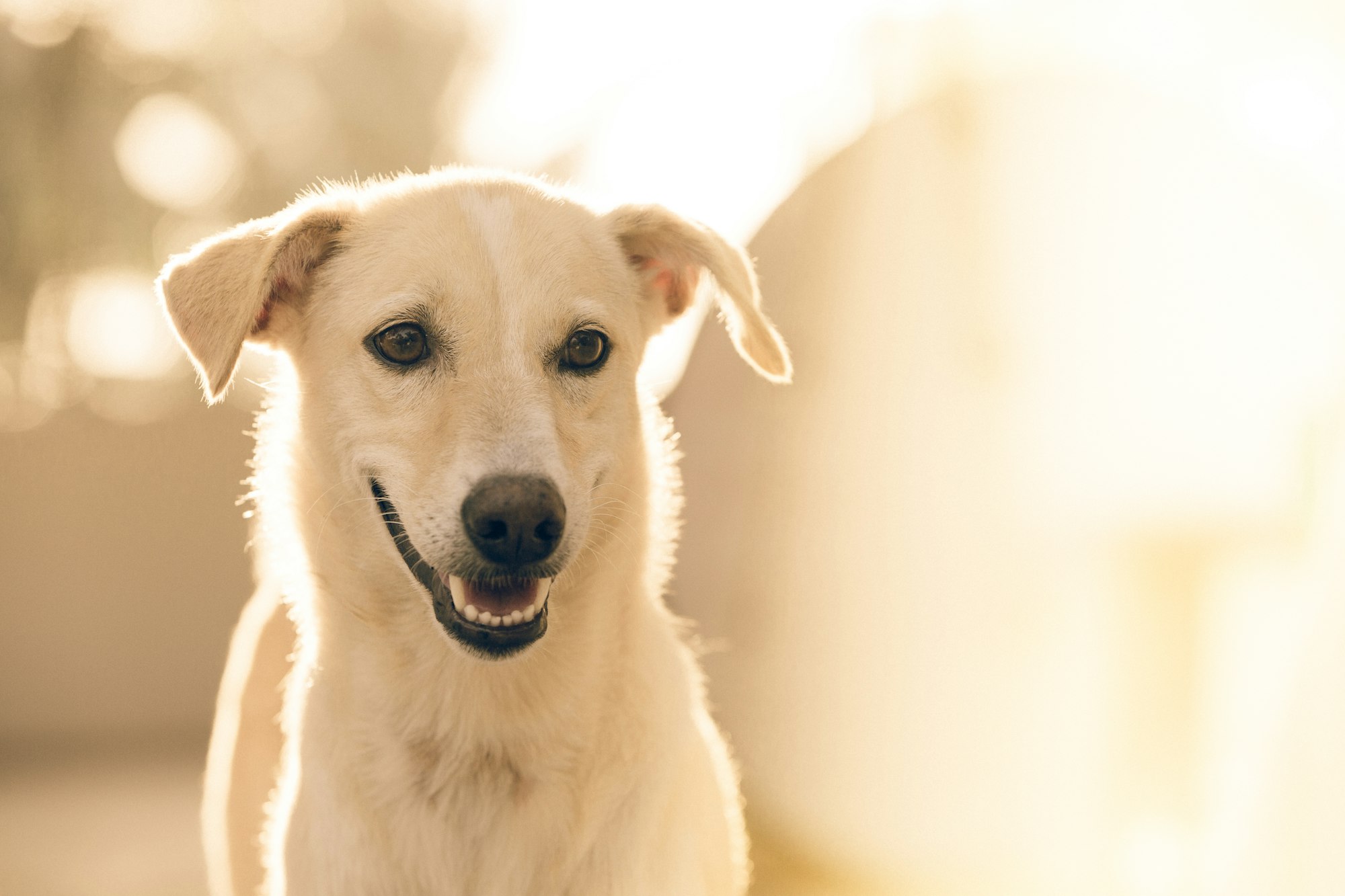
Consistency and patience are crucial when training your dog to be calm in public. Here's how you can incorporate these necessary elements into your training routine:
a. Stick to a Routine: Establish a consistent training schedule and stick to it. Regular training sessions will help reinforce the desired behaviors and create a predictable environment for your dog.
b. Be Clear and Concise: Use clear and concise commands when training your dog. This will help them understand what is expected of them and avoid confusion. Consistency in your verbal cues and body language will reinforce the training messages.
c. Practice Daily: Consistent practice is key to success. Set aside time each day for training exercises, even if it's just for a few minutes. Regular practice will help your dog internalize the desired behaviors and make them more likely to exhibit calmness in public.
d. Stay Patient: Every dog learns at their own pace, so it's critical to stay patient throughout the training process. Avoid getting frustrated or discouraged if progress is slower than expected. Remember that each small step forward is a step in the right direction.
e. Reinforce Positive Behaviors: Whenever your dog displays calmness in public, be sure to reinforce and reward that behavior. Use treats, verbal praise, or physical affection to let them know they're doing well. Consistently reinforcing positive behaviors will encourage your dog to continue exhibiting calmness.
f. Adjust Expectations: Keep in mind that training takes time and that progress may be gradual. Adjust your expectations accordingly and celebrate even small achievements. Recognize and appreciate the efforts your dog is making, and continue working towards the ultimate goal of a calm and well-behaved dog in public.
By maintaining consistency in your training methods and having patience throughout the process, you'll create a solid foundation for your dog's ability to remain calm in public. Remember, building new behaviors takes time, but with consistent effort and a positive mindset, you'll achieve the desired results.
Conclusion:
Training your dog to be calm in public is a rewarding and essential process that enhances your bond and allows for enjoyable experiences together. By following the outlined steps and incorporating positive reinforcement techniques, you can help your dog develop the necessary skills to navigate public spaces with confidence and composure.

FAQs:
Here are some frequently asked questions (FAQs) related to training a dog to be calm in public:
1. Can any dog be trained to be calm in public?
· Yes, any dog can be trained to be calm in public with proper training, patience, and consistency.
2. How long does it take to train a dog to be calm in public?
The duration of training can vary depending on several factors, including the dog's temperament, prior training, and the consistency of training efforts. It may take several weeks to months of consistent training to see significant improvement. Remember, every dog learns at their own pace, so patience is key.
3. Is professional training necessary for this process?
· While professional training can be beneficial, it is not always necessary. Many dog owners successfully train their dogs to be calm in public with consistent, positive reinforcement training.
4. What if my dog becomes anxious or aggressive in public?
· If your dog displays signs of anxiety or aggression in public, it's crucial to remove them from the situation and seek professional guidance. A dog trainer or behaviorist can help address the underlying issues and provide appropriate strategies for managing such behavior.
5. Can I use treats to reward my dog's calm behavior?
· Yes, using treats as a reward for your dog's calm behavior is an effective method of positive reinforcement. Choose small, tasty treats that your dog finds motivating and rewarding.
6. Can age affect a dog's ability to be calm in public?
Age can influence a dog's ability to be calm in public to some extent. Puppies may require more time and patience to learn self-control and calmness, while older dogs may need additional training to adapt to new environments. However, dogs of any age can be trained to exhibit calm behaviors with consistent training.
7. Are there any specific breeds that are more challenging to train for calmness in public?
While individual temperament plays a significant role, some breeds may have higher energy levels or a predisposition to certain behaviors that can make training for calmness more challenging. However, with proper training and socialization, dogs of all breeds can learn to be calm in public.
